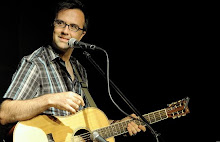1977 also saw the introduction of Roland's GR-500, which used a dedicated guitar (reputedly manufactured by Ibanez to Roland specs) and was rather more successful. The Les Paul-shaped guitar also had an on-board infinite sustain contraption and was used by Steve Hackett and Alex Lifeson. Roland's subsequent guitar synth, the GR-300, introduced in 1980, was my introduction to the wonderful world of guitars that don't sound like guitars. What could be cooler than when Pat Metheny came out on stage playing trumpet through his guitar, as I saw him do in the mid eighties? Robert Fripp and Andy Summers also got some cool sounds out of the GR-300, as on their 1982 duo album I Advance Masked
No amount of techie explanation could assuage the hilarity which greeted Roland's next guitar synth controller, part of the GR-700 package. With its offset triangular shape and goofy body-neck outrigger handle thingy, the futuristic silver GR-700 guitar was not ready for 1985 or any other year. But the deal included MIDI for the first time, which allowed the forward-thinking guitarist to plug into any MIDI-equipped sound module.
At this point, I should take a moment to explain to our younger readers that there was a time when guitar synths seemed, well, cool. This coincided with a time in which synths were seen as cool by most people and guitars not so much. The eighties was basically the only time in history that this has ever happened, and I was one of the brainwashed masses. I even stopped playing guitar for a while when I got my Yamaha DX-7, and plunked around on that while marvelling at its perfect intonation, lacking of breaking or out-of-tune strings, and ability to conjure ANY sound imaginable. Guitar Player magazine should take some of the blame, with a seemingly constant stream of articles about 'electronic guitar' and how to get on board.
In 1991, I joined a band that had previously featured a guitar player who doubled on flute. With a new record deal under our belts, we managed to convince our manager to buy us some new equipment. I made out with a Marshall 4-12" speaker cabinet, a TubeWorks Mosvalve power amp (I already had a Roland GR-8 that I was using as a preamp/effects unit) and a Roland GR-1 guitar synth, which allowed me to reproduce the flute player's solos. This model worked with any guitar, so I attached the hex pickup to my Strat and went to town.
Around the time that band broke up, the eighties ended. Now, it was well into 1992, but sometimes these things take a while. I still remember hearing "Smells Like Teen Spirit" on my Walkman radio on the bus home from college and feeling like something was shaking loose in the long plastic winter that was the 1980s. I sold all of my high-tech gear, bought an old 50-watt Traynor tube head, and got grungy.
Ever since then, the guitar synth has seemed to me an embarrassing memory of deluded youth. I've never even considered returning to the fold, even through what I'm sure are quantum leaps in note tracking and the sonic realism of synthesizer patches. Even my hero Jerry Garcia's adoption of guitar synth later in the nineties fell on my deaf ears. Allan Holdsworth, who embraced guitar synth wholeheartedly after its eighties heyday, just seems ill-placed on his weird-ass SynthAxe:
One more video should suffice to contextualize the full-on nerddom of the guitar synth. Step forward, Stepp guitar synthesizer.
So the question remains: with all manner of formerly embarrassing eighties culture (hair metal, leg warmers) suddenly hot again, is the guitar synth ready for a comeback?













I would not be surprised to see the guy w/ Muse playing one.
ReplyDeleteI have a GR-55 and a GK-3 pick up. I still use my old POD for the guitar output but some of the sounds I get out of the 55 are incredible particularly when layered live with the guitar. I also use the 55 to control Omnisphere and Dimension VSTs in Sonar X2 DAW.OIt's like being a mini-orchestra.
ReplyDeleteThe 55 is well worth the money IMHO.
Rich